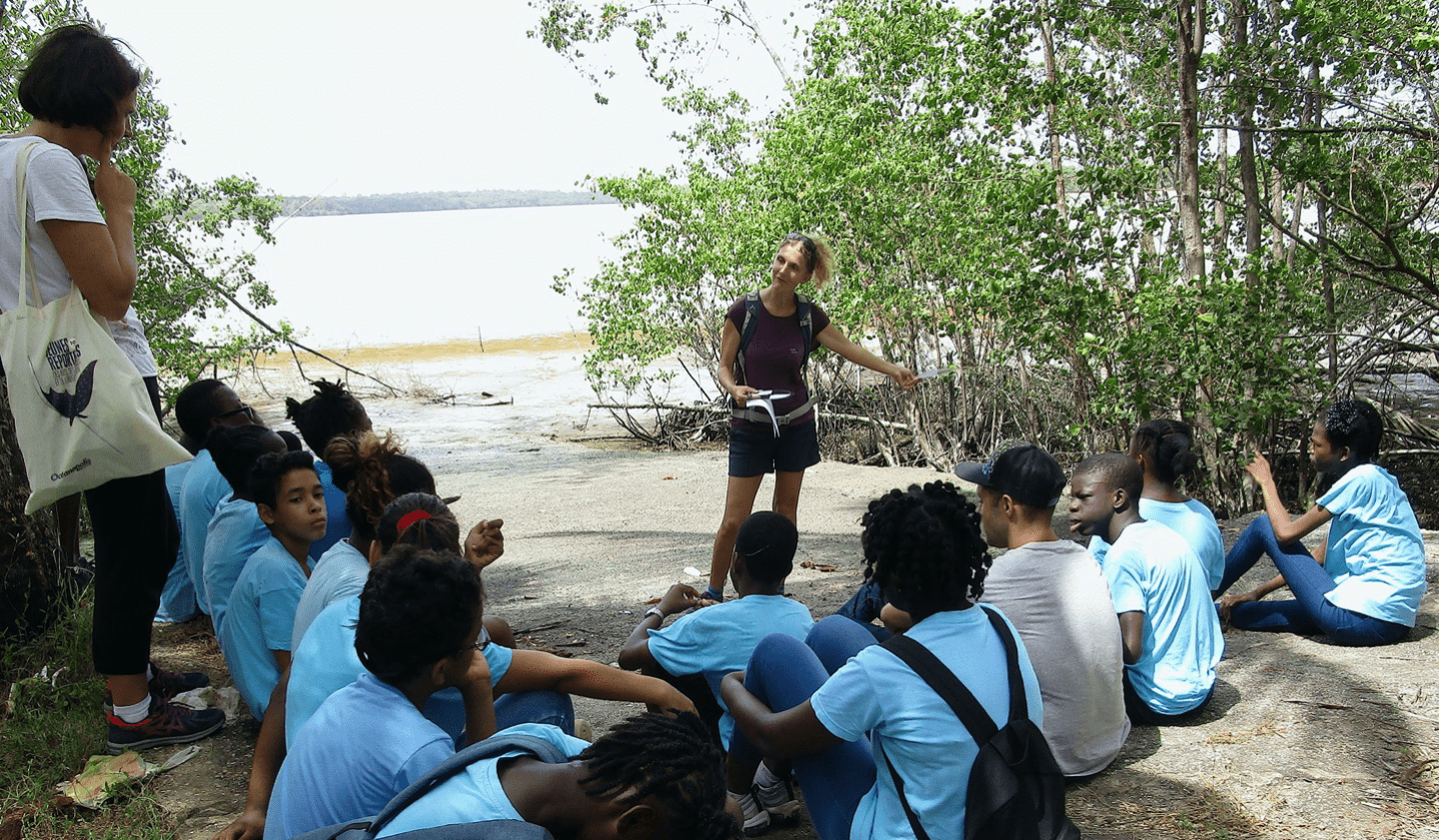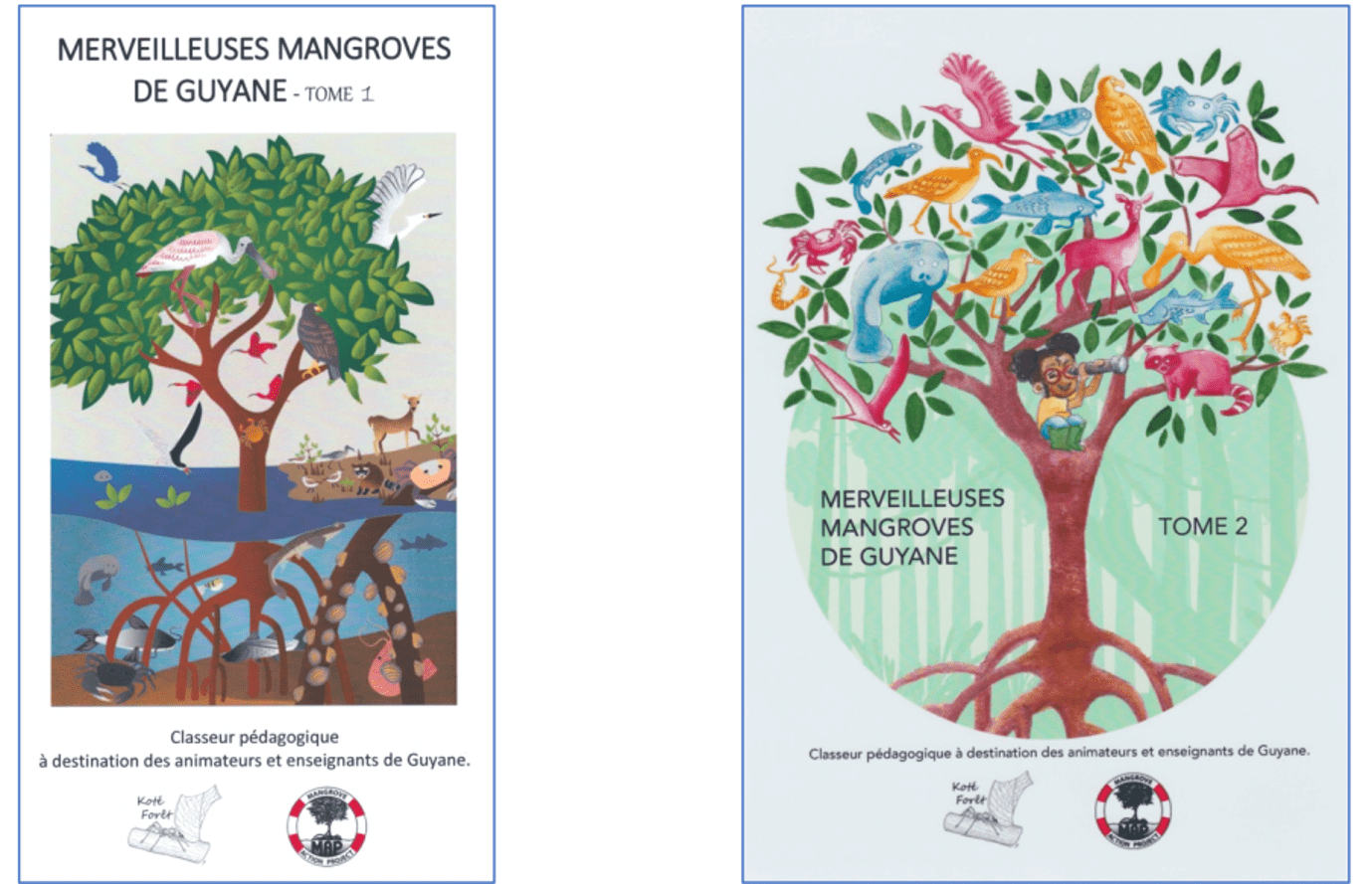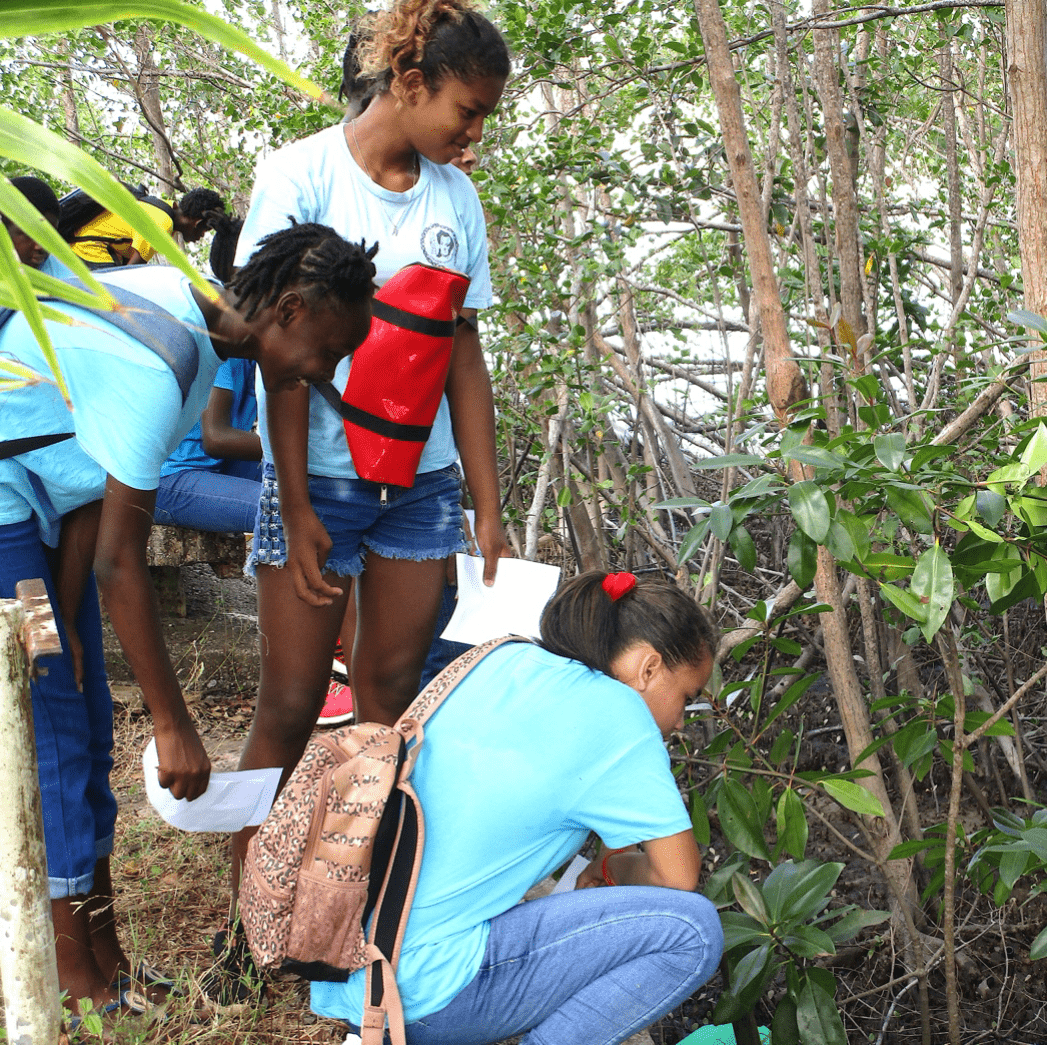Marvellous Mangroves for French Guyana
Merveilleuses Mangroves de Guyane, the French version of Marvellous Mangroves, adapted and translated for use in French Guyana, has just been published. The joint project between the Mangrove Action Project (MAP), Cayman Islands-based Mangrove Education Project (MEP) and Kote Foret was started in early 2018 when MAP education director and MEP executive director Martin Keeley and Kote Foret’s director Lucille Dudoignon began the process by reviewing the Dutch version from the country’s Suriname neighbour.

Kote Foret’s Lucille Dudoignon with teacher Audrey Gardan (left) and students of the College Schoelchner reviewing mangrove ecology at Pointe de Roches Park in Kourou, French Guyana.
© Martin Keeley / MEP and MAP
Mr. Keeley travelled to French Guyana in 2018 as well as the following year, and in the fall of 2019 ran a three day pilot workshop with Ms. Dudoignon at the College Schoelchner school in Kourou on the coast. The workshop was supported by teachers Audrey Gardan and Remy Catel and combined their classes for several of the activities as well as the field trip held on the third day to the mangroves at Pointe de Roches in Kourou.
“The pilot went extremely well,” says Mr. Keeley. “My French is a bit rough, but Lucille took over and with her teaching skills the kids participated enthusiastically in both the activities and the field trip. We had spent several days prior to the pilot reviewing the materials and their application. It takes a long while to put together a Marvellous Mangroves program in a new country, and while the ecosystem in French Guyana is essentially the same as that of Suriname there are some differences in the flora and fauna, the translation needs to be accurate. Social styles can also be different and this can affect classroom implementation.”

Covers of the two volumes of “Merveilleuses Mangroves de Guyane”
Mr. Keeley says one of the key aspects of the northeast coastal ecosystem of South America is that it is dramatically different from other countries that have adapted Marvellous Mangroves. It is severely influenced by the impact of the daily outflowing of millions of tons of sediment from the mouth of the Amazon river. This sediment is carried by ocean currents northwards along the coast of the Guyanas and Suriname and creates massive mud banks many miles long and wide and very deep.
“These mud banks actually move along the coast several miles a year and completely change the shoreline – whether it’s creating new land mass or totally destroying it,” he explains. “Because of this dynamic coastal movement any mangrove restoration or sea wall construction becomes almost futile. Add to the mobile mud banks the impacts of sea level rise, then coastal communities become severely threatened.”
The mud banks also have a serious impact on water quality. The crystal clear waters of the Caribbean are replaced by turgid, sediment laden ocean waters that make it virtually impossible clearly see the underwater ecosystem, unless you are in the river estuarine intertidal zones. “The difference in water quality and the density of sediment is illustrated using several activities in Merveilleuses Mangroves de Guyane which demonstrate the process in the classroom enabling students to practically reproduce the reality of the mud bank dominated coastal zone,” Keeley adds.

Students of the College Schoelchner studying red mangroves at Pointe de Roches Park in Kourou, French Guyana.
© Martin Keeley / MEP and MAP
While the COVID 19 virus has slowed down the implementation of Marvellous Mangroves in French Guyana Ms. Dudoignon reports that teacher and school workshops should begin in the fall, with an extension to Guadeloupe at the end of the year organised through Gaëlle Vandersarren, coordinator of the Tropical Overseas Wetlands Resource Center on that island.
Merveilleuses Mangroves de Guyane is funded with support from: the Direction Générale des Territoires et Mer as part of the International Year for Coral Reefs (IYOR 2018), the Territorial Community of Guyuane (CTG), l’Office Français de la Biodiversité (OFB, anciennement AFB), The Lush Foundation, and Singing Field Foundation.
You can learn more about Marvelous Mangroves and connect with other communities utilizing the program through the Marvelous Mangroves website or through the Mangrove Action Project page here.